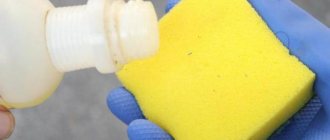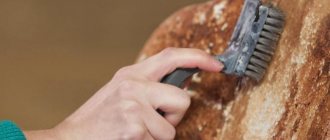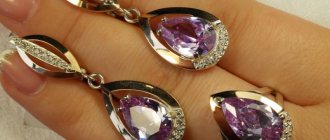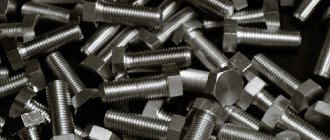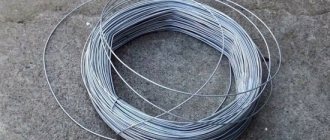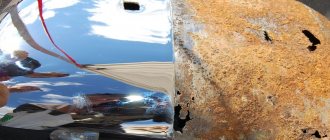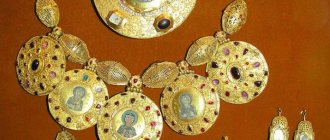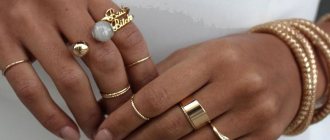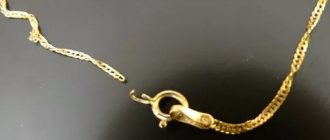By learning how to do gilding at home, which is not as difficult as it might seem at first glance, you can give a second life to your favorite copper and silver jewelry. Products made from gold have been very popular among both women and men for many years. To own such products without significant costs for their acquisition, it is enough to master the technology of gilding.
Both non-ferrous alloys, steel or cast iron can be plated with gold
What metal products can be coated with gold plating?
The most common process is gilding silver, but gold plating can be applied to the surface of other metals. Thus, gilding can be applied to products made of copper, brass and zinc, as well as iron and steel, etc.
There is no clear answer to the question of how to gild metal at home. It all depends on what metal products need to be subjected to such processing. The choice of gilding technology carried out at home is also influenced by the result that needs to be achieved.
With the help of gilding you can give ordinary things a completely different look.
Various methods can be used to gild metal, the most common of which are:
- rubbing the surface of the product with a solution of gold chloride;
- gilding, performed by immersing the product in a solution with a zinc contact;
- galvanic gilding.
Each of these methods of gilding, performed at home, requires the use of certain chemicals, tools and equipment.
How long does it last
The durability of the coating is affected by how carefully the silver is stored and worn. If an item is purchased in a jewelry store and has quality certificates, it will delight the owner for more than 2 years. Earrings and brooches that have little contact with the body will retain their visual appeal longer than a chain or bracelet.
Factors that negatively affect the durability of gold-plated items:
- contact with water and chloride compounds contained in it;
- exposure to concentrated chemicals;
- improper care;
- constant friction against the skin, interaction with sweat.
Preparation and use of gold chloride
To gold-plate metal, a solution called gold chloride is often used. To prepare such a solution, gold is dissolved in “aqua regia,” which is a mixture of hydrochloric and nitric acids. Hydrochloric and nitric acids are taken in a ratio of 3: 1. Gold is placed in this composition, and then the liquid is evaporated. The procedure for evaporating liquid from such a solution should be carried out very carefully so as not to cause burns to the skin and respiratory tract. The dry substance remaining after evaporation is precisely gold chloride.
When evaporating, you need to separate the open fire from the container with the solution, for example, by making a layer of asbestos chips poured into a separate container
Before using gold chloride for gilding, it must be mixed with a solution of potassium cyanide and washed chalk, resulting in a paste-like mass. Using a brush, this paste is used to cover the product, after which it is left for some time, and then thoroughly washed and polished.
To gild steel, gold chloride is mixed with ether. The product coated with this composition is left for some time until the ether has completely evaporated, and then the treated surface is simply rubbed with a cloth to impart a golden shine.
Using gold chloride, previously mixed with ether, various inscriptions and patterns can be applied to a metal object. In order to carry out this procedure, a quill pen is dipped into the resulting solution and the required inscriptions and patterns are made, which, after evaporation of the ether and polishing, will sparkle with a golden sheen.
Large surfaces are covered with gold using a soft brush
As mentioned above, gold plating is often applied to silver, for which gold chloride can also be used. To perform chemical gilding of products made from this metal, it is necessary to prepare a mixture that includes the following components:
- gold chloride – 10 grams;
- potassium cyanide – 30 grams;
- table salt – 20 grams;
- soda – 20 grams;
- water – 1.5 l.
Chemical gilding, which must be applied to silver, can also be performed using a mixture of:
- gold chloride – 7 grams;
- potassium ferric sulfide – 30 grams;
- potassium carbonate – 30 grams;
- table salt – 30 grams;
- water – 1 l.
The procedure for sputtering a layer of gold onto a metal surface using chemical solutions is performed in the following sequence.
- The product being processed is pre-calcined.
- The surface of the object is etched first with a solution of sulfuric acid and then with nitric acid.
- The pickled product is momentarily dipped into a mixture consisting of sulfuric, nitric and hydrochloric acids.
- After treatment in a mixture of acids, the product is rinsed with water, then immersed in mercury and finally in water, where it is kept for 30 seconds.
- After a container of water, the product is placed in a solution for gilding, kept for the required time, then washed with water and dried in sawdust.
Technical information about our gold plating capabilities
has the opportunity to offer the following types of electrolytes and coating methods in our production, as well as the sale of electrolytes, equipment and technological processes for their implementation in your production.
The following list of processes is the most extensive on the market. Thanks to him, we have the opportunity to offer gold application using all known and proven methods.
Both in baths (chemically and electrochemically) and tribogalvanically using gold-containing gels.
Immersion gold plating (no current)
Immersion gold plating is used when applying gold coating to radio components, microcircuit housings, and printed circuit boards. Immersion gilding occurs by the reaction of replacing the underlying metal with gold. As a rule, immersion gold is applied to an electrochemical nickel coating.
The coating thickness increases until all coated surfaces are covered with gold. After this, the reaction stops. In this way, it is possible to obtain 24-karat gold coatings up to 0.2 microns thick.
We have at our disposal a composition both for simple immersion gold plating and with mixed properties (first the composition works immersion, then continues to chemically apply gold, increasing the thickness.)
Chemical gold plating (no current)
- Chemical application of gold coating on products of the radio-electronic industry up to 0.5 microns. It is also used for products of very complex shapes and when the same coating thickness is essential in all areas of the product. Gold purity in the coating is 9999+. Applied to chemical nickel or immersion gold to increase adhesion. Available in 2 different formulations.
Galvanic gilding under the influence of electric current
- Electrolyte for applying gold (only in baths), phosphate. It is characterized by a relatively low application speed and requires heating up to 60 degrees. Thin coatings retain shine, but when thick coatings are applied, dullness occurs and accumulates. Has moderate adhesion to most metals. However, all these shortcomings are compensated by the very high purity of the applied gold plating with a purity of 9999 and a perfect golden color. Thickness up to 20 microns. The electrolyte is mainly used technically in industrial enterprises, in most cases of applying electroplating with pure gold to radio components, contacts, boards, etc. gold from 1 g/l and above at the customer’s request. Product preparation includes degreasing and activation. gold 2-100 g/l. It is possible to adjust the electrolyte for gold during operation.
- Electrolyte for underlayer gilding, acidic - pH 1. Used to prevent initial contact deposition of gold at the very beginning of plating and when it is not possible to achieve proper adhesion of the gold coating immediately in the main gilding baths. There is no point in applying coatings thicker than 0.1 microns from such an electrolyte. gold 1 g/l.
- Matte alkaline gilding electrolyte for baths to obtain coating thicknesses up to 100 microns. Gold plating purity 9999. Requires preliminary gilding. gold from 1 g/l to 100 g/l.
- Electrolyte of weakly acidic galvanic gold plating with nickel alloying additive, the content of which in the coating is 0.1-1.5%. - at the request of the customer. The higher the nickel content, the higher the wear resistance of the coating and the more noticeable the color change towards lightening from pure gold. Compared to pure gold, the abrasion resistance of such coatings increases by 8-10 times. Thickness up to 10 microns, then the coating becomes matte. Suitable for decorative gilding of tableware, jewelry, souvenirs, costume jewelry, watches, weapons, etc. and so on. Preparation for coating products includes degreasing and activation.
- Electrolyte of weakly acidic galvanic gold plating with the alloying addition of cobalt, the content of which in the coating is 0.1-1.5%. - at the request of the customer. The most common gold plating electrolyte. The higher the cobalt content, the higher the wear resistance of the coating and the more noticeable the change in color of the coating towards pinkishness from pure gold. Compared to pure gold, the abrasion resistance of such coatings increases by 8-10 times. Thickness up to 10 microns, then the coating becomes matte. Suitable for decorative gilding of tableware, jewelry, souvenirs, costume jewelry, watches, weapons, etc. and so on. Preparation for coating products includes degreasing and activation.
- Electrolyte for applying gold plating under 585 standard, so-called “rose gold”. It is used to give products a tint of “Soviet” 585 gold alloy. It is possible to select a shade based on the customer's sample. The abrasion resistance of such a coating is 4 times higher than that of a gold-cobalt alloy. The plating is a ternary gold-based alloy, the actual fineness of which is approximately 750.
- We have the ability to prepare gilding electrolytes according to the customer’s recipe, as well as other compositions not listed here for applying various alloys of gold with other alloys, including precious metals, for both decorative and technical purposes.
- Gold-containing gel for local application of gold plating using the tribogalvanic method, as well as coating of large oversized products.
- Electrolyte for applying gold locally tribogalvanically, without a gel thickener (unlike gels, it allows the gold contained in it to be deposited on products much more completely)
- Various liquids and electrolytes to give the freshly applied gold plating different shades.
- Electrochemical polishing of gold and its alloys. (several compositions)
- Removal of gold coating without etching the surface of products, both for restoration purposes and for the purpose of metal regeneration.
Website developed
Application of zinc contact
To obtain a thicker gold-plated layer, a zinc contact is used. Using this method, you can, for example, coat silver with a layer of gold. For gilding, a composition is prepared from the following components:
- gold chloride – 15 grams;
- carbonic potassium salt – 65 grams;
- yellow blood salt – 65 grams;
- table salt – 65 grams;
- water – 2 l.
It will take some time to dissolve all components of the composition
Products made of copper and brass are plated with gold in a solution of the following composition:
- gold chloride – 2 grams;
- caustic potassium – 6 grams;
- potassium cyanide – 32 grams;
- sodium phosphorus salt – 10 grams;
- water – 2 l.
Objects on the surface of which it is necessary to apply a layer of gilding are thoroughly cleaned of dirt and grease, then they are placed in a preheated gilding composition. The products already there are connected to a zinc rod, which acts as a contact.
Compositions of degreasing solutions
In order for the gilding applied to the surface of products made of steel, zinc and tin to be of high quality and have good adhesion, they must be subjected to a copper plating procedure before gilding.
Gilding at home
When using gilding technology, you can restore the former attractiveness of almost any jewelry made of copper or silver. Products with gilding are used in a variety of ways, most often they become decoration.
Gilding at home can be carried out using a variety of technologies. You can coat items made of silver or other alloys with gold, the main thing is to know all the features of the process.
Restoring gilding is best done at home using special substances and equipment.
Gilding at home
Various gold plating techniques
The quality of the resulting surface largely depends on the characteristics of the technology used. The most widespread are the following:
- Electroplating method: gold plating.
- Use of special chemicals.
- Mechanical method of applying the required substance.
In each case, certain tools and chemical reagents are used.
At the same time, some technologies are suitable for coating chains at home, others for processing other products for their intended purpose.
Chemical method
Chemical gilding of silver or other alloy is the process of applying gold chloride to the surface being treated. Recommendations for creating the required reagent are as follows:
- The metal must be forged onto pre-prepared foil. All elements must be crushed into small elements.
- Small pieces are immersed in a mixture of a previously prepared chemical reagent. The solution is created by combining 30 grams of hydrochloric acid concentrate and 10 grams of nitric acid. It is worth considering that you need to work with such substances at home carefully.
- For one gram of spraying there is at least 10 ml of solution. That is why you should calculate the required amount of liquid in advance.
Gilding solution
Porcelain dishes are used to mix active reagents. The dissolution process can last for three days. After preliminary preparation of the metal, it is evaporated at a temperature of about 80 °C until liquid appears. At the time of evaporation, you should stir the resulting consistency with a glass rod from time to time, which will result in a homogeneous composition.
When carrying out gilding of metal, it is necessary to qualitatively prepare the required composition. To do this you will need:
- Water purified from impurities at a temperature of 60 °C.
- About 15 grams of gold chlorine salt syrup.
- More than 65 grams of potassium carbonate or sodium chloride. Both substances must undergo high-quality purification.
The surface of silver or other items should be coated only after preparation. To do this, degreasing is carried out using 20% sodium hydroxide, after which the product is washed in a 25% soda solution.
Chemical gilding
After preparing the surface, the product is coated in the previously prepared mixture. After some time it becomes gold plated. After removing and drying the surface, it is washed and wiped with a dry cloth. To give a more attractive look, the gilding is polished with woolen cloth.
Mechanical methods of gilding
Gold plating is characterized by certain qualities that make the product more attractive and resistant to environmental influences. Mechanical application of gold plating is carried out extremely rarely, since it is quite difficult to achieve uniformity of the surface layer. The features of the technology under consideration include the following points:
- For such gilding, a special paste is used. It can be prepared in a specialized store or made with your own hands. The composition of the paste may vary significantly, which is worth considering.
- The layer obtained by using the mechanical method of gilding at home has a small thickness. That is why the resulting coating will not last for a long period.
- Common ingredients include yellow blood salt, chalk powder and cream of tartar.
- It is recommended to mix the paste with water to obtain a homogeneous paste, which is rubbed into the surface using a woolen cloth.
- Before gilding at home, the surface must be degreased. Special compounds are also used for this.
- The gilding paste should be applied in an even layer; when rubbing, care should be taken to ensure that the substance does not get on exposed areas of the skin.
Manual gold plating
Mechanical technology is quite complex to implement. As a rule, it is used if you need to cover only part of the product at home. This is due to the fact that other coating technologies involve complete immersion of the product in a special solution.
Gilding by electroplating
A thick layer of high quality gold plating can be obtained using special technology. It involves immersing the workpiece in a special electrolyte. The galvanic method is used to process a wide variety of workpieces, as it resembles common electrochemical processes.
It is worth considering that depending on the type of solution used, the surface can acquire a variety of shades. You can make an electrolyte for gilding yourself at home as follows:
- For 700 ml of purified water, add 60 grams of sodium phosphate.
- When using 2.5 grams of gold chloride, 150 ml of water is used to dissolve them.
- 10 grams of sodium sulfide, as well as one gram of potassium cyanide, are dissolved in 150 ml of distilled water.
Such reagents should be handled with care. Gold electroplating at home is carried out by heating the solution to a temperature of about 60 °C, and an anode is installed to activate the chemical process to deplete the electrolyte.
It takes about 15 hours to process the workpieces in such a solution. A low current helps to significantly increase the efficiency of the process. Due to this, a matte gold film is formed on the surface.


